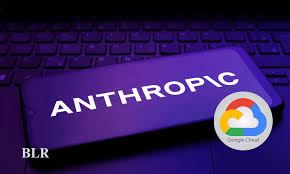AI startup Anthropic has announced a major expansion of its collaboration with Google, securing access to up to one million Tensor Processing Units (TPUs) to train and scale its Claude family of language models. The deal, revealed earlier this week, is one of the largest cloud infrastructure partnerships in the AI sector to date.
Massive Compute Boost with Google Cloud TPUs
The partnership grants Anthropic access to Google Cloud’s TPU v5p and TPU v6e chips, designed specifically for high-efficiency, large-scale AI workloads. This leap in compute resources will enable faster model training, improved fine-tuning processes, and the development of increasingly advanced AI systems.
“We’re entering a new phase of AI scaling,” an Anthropic spokesperson said. “The combination of Claude’s safety architecture with Google’s TPU infrastructure enables us to train larger, smarter, and more aligned models than ever before.”
Strengthening Cloud-AI Industry Ties
The expanded partnership underscores the growing interdependence between AI developers and cloud providers. Analysts note that Anthropic’s TPU allocation rivals the scale of OpenAI’s GPU access through Microsoft Azure, reflecting an escalating competition among major players in the AI landscape.
For Google, the deal signals increasing confidence in its TPU-based infrastructure as a strong alternative to Nvidia’s GPU ecosystem. “Anthropic’s choice demonstrates confidence in our end-to-end AI infrastructure,” said Thomas Kurian, CEO of Google Cloud. “We’re committed to supporting safe, scalable AI systems that push the boundaries of what’s possible.”
A New Era of Scalable AI Research
Industry observers call the one-million TPU milestone a watershed moment in the evolution of cloud-based AI research. The expanded compute access positions Claude among the most powerful large language model platforms globally, capable of supporting increasingly sophisticated reasoning, safety, and alignment capabilities.
As AI models grow ever more compute-intensive, partnerships of this scale are expected to define the next phase of AI development—where infrastructure, capital, and innovation advance together to sustain rapid progress in artificial intelligence.

